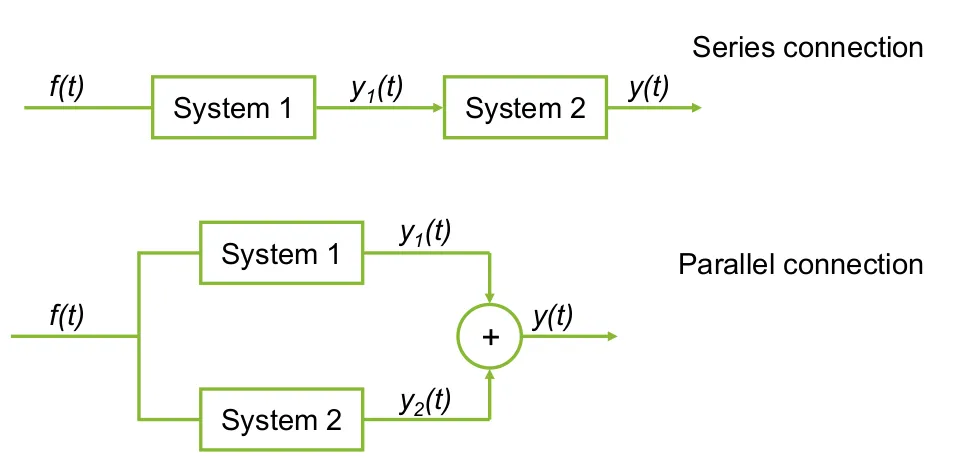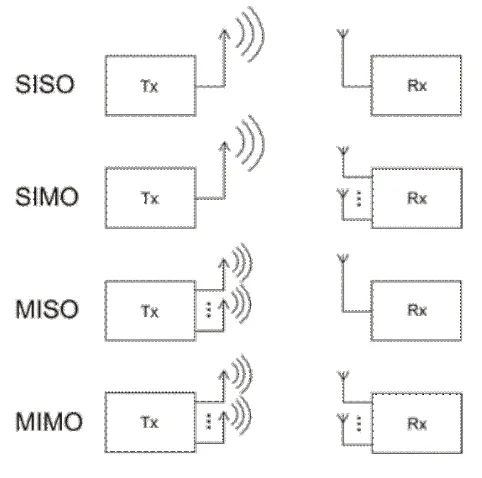Introduction
In this part we will learn to classify systems and recognize a Linear-Time Invariant System
Let’s first define what a system is.
Systems
Our definition of a system will be:
An entity that processes a signal/a set of signals to yield another signal/set of signals.
The input, also called excitation, goes through the system and the system spits out an output, also called response.
Interconnection
We can have multiple systems.
If they are in sequence, we call it a series connection. We can also have parallel connection.

Number of inputs and outputs
- Single Input Single Output
- Single Input Multiple Output
- Multiple Input Single Output
- Multiple Input Multiple Output

Linearity
A system is said to be linear if a linear combination of inputs yields the same linear combination of the outputs to each individual input: $$ x_1(t) \to y_1(t) \newline x_2(t) \to y_2(t) $$
$$ a x_1(t) + b x_2(t) \to a y_1(t) + b y_2(t) \ | \ \text{Superposition principle} $$
Recall that, Superposition $=$ homogeneity + additivity.
Homogeneity: $$ a x(t) \to a y(t) $$
Additivity: $$ x_1(t) + x_2(t) \to a y_1(t) y_2(t) $$
Time-invariance
A system is said to be time-invariant if a time shift in the input signal results in the same time shift in the output signal: $$ x(t) \to y(t) \newline x(t - t_0) \to y(t - t_0) $$
Example
$$ y(t) = (sin(t))x(t) $$
$$ y(t - t_0) = (sin(t - t_0))x(t - t_0) \neq (sin(t))x(t - t_0) $$
Which means this function is time variant!
BIBO-stability
A system is BIBO-stable if a bounded input results in a bounded output
Example
$$ y(t) = 3x(t) + 2 $$
$$ |x(t)| \leq C \to |y(t)| \leq 3C + 2 $$
Bounded means the input/output is stable!
Causality
A system is causal if the value of the output at the present instant depends only on the present and past values of the input. Therefor all physical systems are causal!
Example
$$ y[n] = \dfrac{1}{3}\{x[n - 2] + x[n - 1] + x[n]\} $$
Note that this input is discrete, this is because all of these system properties apply to both continuous and discrete cases!
Dynamic
A system is instantaneous or memoryless if it’s output at a certain time instant depends only on the input at the same time instant. If this doesn’t hold, this must mean the system is dynamic!
Example
$$ y[n] = \dfrac{1}{3}\{x[n - 2] + x[n - 1] + x[n]\} \ | \ \text{dynamic!} $$
Note, if it said to be instantaneous or memoryless, this also implies that the system is causal!
Invertible
If a system is said to be invertible, this means that observing one output leads us to a single input.
Example
$$ y(t) = x^2(t) \ | \ \text{\textbf{not} invertible!} $$
LTI
Now, LTI, as we defined earlier, are system that are both liner and time time-invariant!. We’ll see why these are important later on!